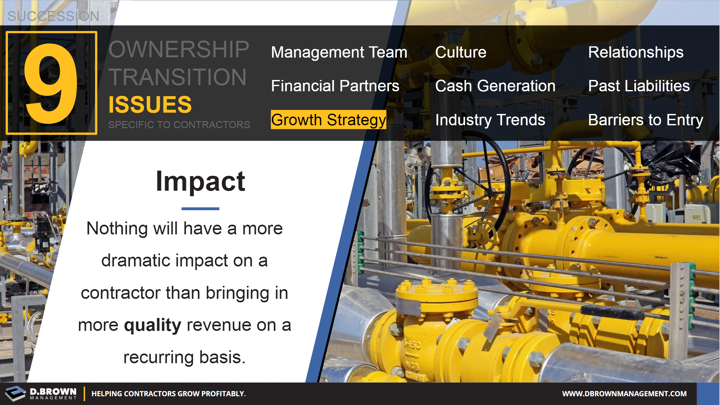Consider this the same as investing in a piece of real estate.
- Minimal growth is the equivalent of buying the home you are living in with a 10-15 year mortgage. The mortgage will eat up most of your disposable income for that period of time, and in the end you will own the house along with any market appreciation it had. Not a bad deal but not a major creation of wealth, though it was a good forced savings plan for the new owners.
- Strategic growth is the equivalent of buying a 20-unit apartment complex in a good neighborhood that will cash-flow a mortgage as-is with existing occupancy rates and rents. However, part of the deal includes an adjacent lot where you can develop another 50 units over the next ten years in three phases.
The second structure is more complicated with more risks and financing required. It will also create more value for both past and future ownership groups, as well as more opportunities for employees.
What is your strategic growth plan and how does that factor into succession? This is where an experienced but unbiased third party can be extremely valuable to bring into the discussion.

